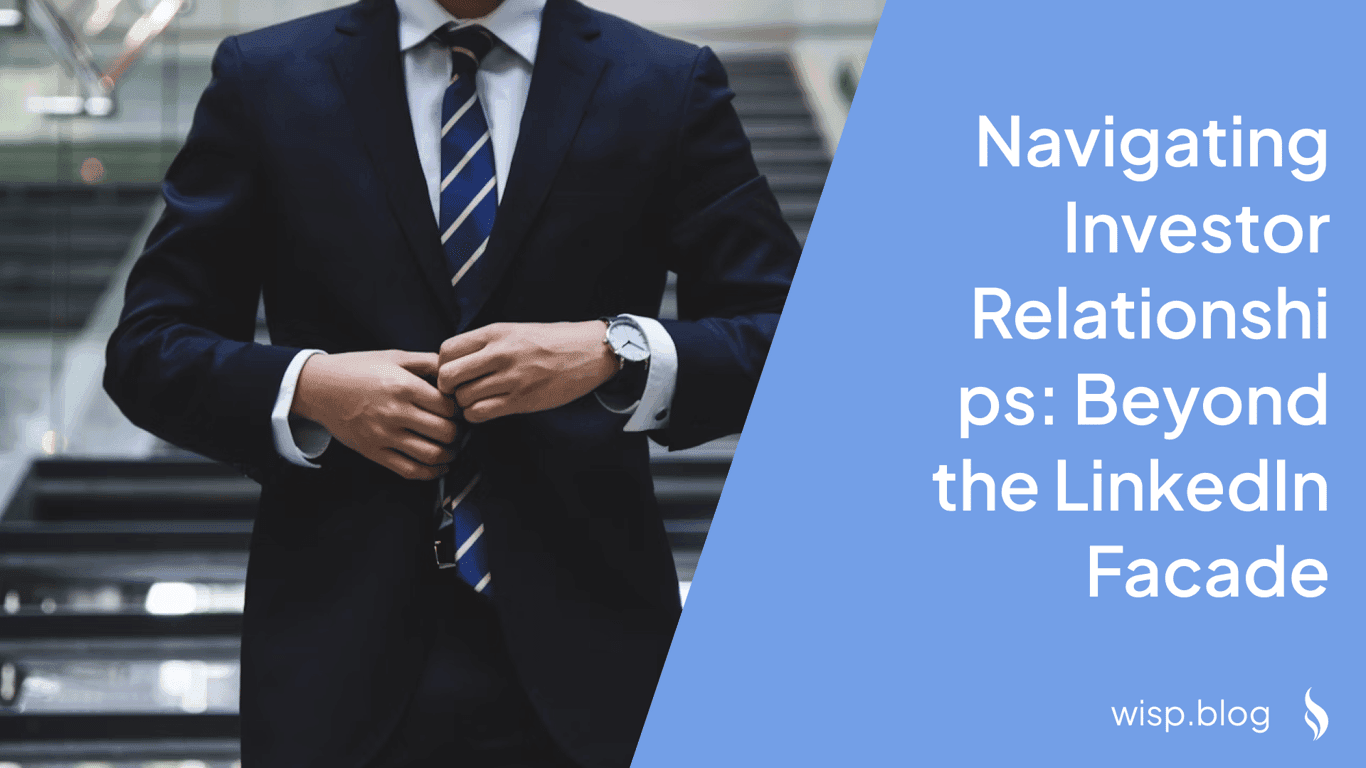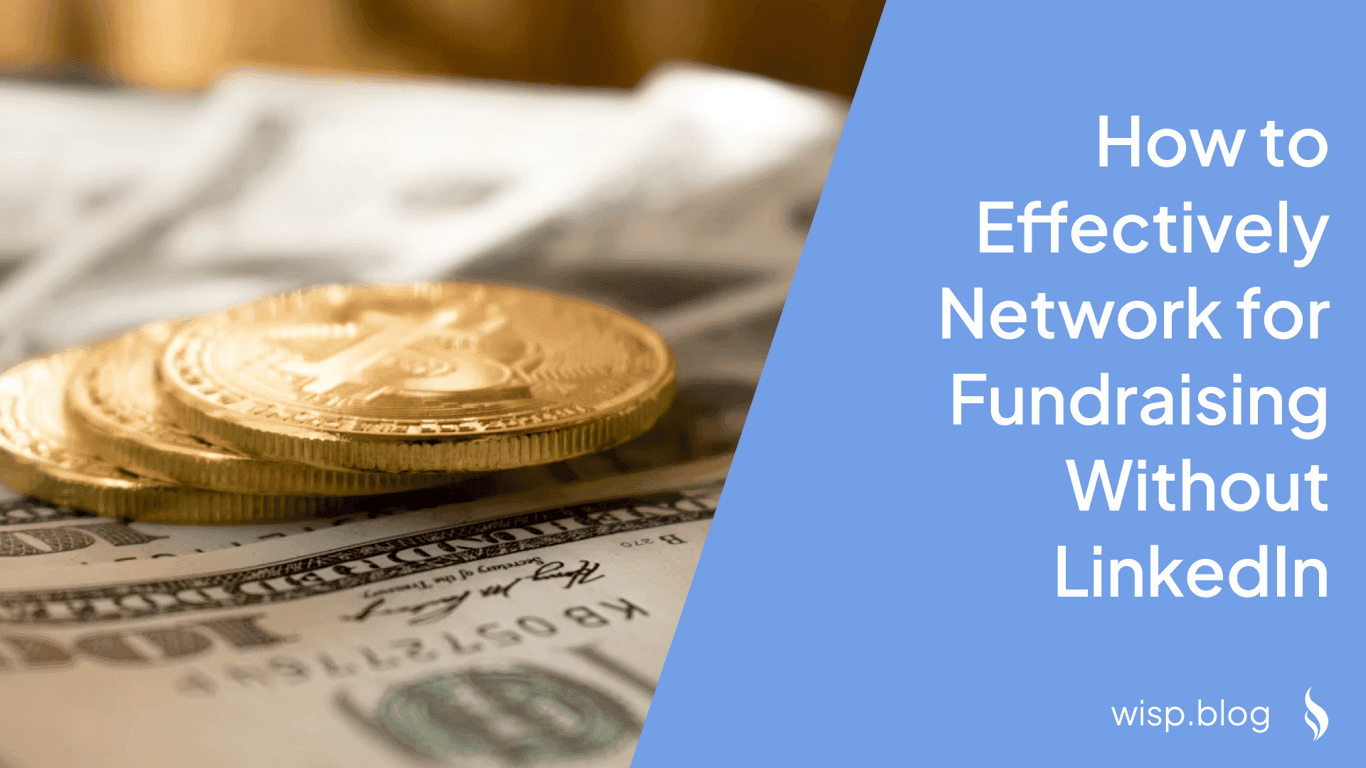 You've launched your startup, built an MVP, and now you're eyeing that pre-seed round. Everyone tells you, "Get on LinkedIn! It's essential for fundraising!" But each time you open the app, your blood pressure rises. The pressure to maintain an active presence, create "thought leadership" content, and engage with connections feels overwhelming when you're already stretched thin running your business.
You've launched your startup, built an MVP, and now you're eyeing that pre-seed round. Everyone tells you, "Get on LinkedIn! It's essential for fundraising!" But each time you open the app, your blood pressure rises. The pressure to maintain an active presence, create "thought leadership" content, and engage with connections feels overwhelming when you're already stretched thin running your business.
"Can I raise a round without having to use LinkedIn?" one founder asked on Reddit. "For some reason this app increases my blood pressure an unhealthy amount."
This sentiment resonates with countless entrepreneurs who question whether LinkedIn truly delivers value proportionate to the time and emotional investment it demands. As we dive into the reality of LinkedIn for startups, we'll explore both sides of this contentious platform and provide practical guidance for those navigating its professional waters.
The Undeniable Benefits of LinkedIn for Startups
Expansive Professional Network Access
LinkedIn offers startups access to a unique audience of B2B decision-makers across 59 million companies. With over 1.15 billion members worldwide (approximately 230 million in the U.S. alone), the platform provides unparalleled access to professionals who might become investors, partners, or customers.
This concentration of professionals makes LinkedIn particularly valuable for B2B startups. As one founder noted, "We got a decent amount of investor interest from our LinkedIn launches, and many used LI to schedule meetings with us." For startups seeking warm intros to potential investors, LinkedIn's networking capabilities can prove invaluable.
Cost-Effective Marketing and Visibility
For cash-strapped startups feeling the financial pressure before achieving traction, LinkedIn offers a free entry point to marketing. The basic membership costs nothing, allowing entrepreneurs to establish a presence without adding to their burn rate.
"I'd love to bootstrap the company but my team needs salaries and we are B2C," shared one founder. "We need a significant user base before being break even for a team of 4." In such scenarios, LinkedIn's free visibility can be a crucial marketing channel while conserving precious capital.
Credibility Building for Fundraising
Investors increasingly vet founders through their LinkedIn profiles and activity. A well-maintained LinkedIn presence signals professionalism and commitment—qualities investors look for when evaluating early-stage opportunities.
"Unless you are in web3, not having a LinkedIn profile raises questions," observed one entrepreneur. Another noted that "investors bet on founders more than products. Posting your thoughts will help." This visibility becomes particularly crucial when approaching your pre-seed round, where founder credibility often outweighs traction metrics.
The Stark Realities and Drawbacks
The Time-Consuming Nature of Effective Engagement
Perhaps the most significant challenge for founders is the time investment required to maintain an effective LinkedIn presence. Building a following requires consistent posting—a task many entrepreneurs find difficult to prioritize.
"It's a pain in the ass to post on a regular basis but it's key to building a following," admitted one founder. "This is hard, I struggled with it for a variety of reasons."
When you're developing your MVP, pursuing traction, and pitching to investors, finding time to craft thoughtful LinkedIn content can feel impossible. The platform's Reciprocity Principle—the expectation to engage back when connections interact with your content—further compounds this time commitment.
Questionable Effectiveness for Fundraising
Despite some success stories, many founders question LinkedIn's efficacy as a fundraising tool, especially for B2C startups. Cold outreach to investors via LinkedIn rarely yields results compared to warm intros through trusted connections.
"I hate using LinkedIn for fundraising. It's not the platform for it," stated one entrepreneur bluntly. Another shared: "I raised way more money with direct mail appeals combined with emails and a webpage. Not sure LinkedIn would be worth the effort."
For those seeking serious investment, platforms like AngelList or participating in pitch competitions often provide more direct access to investor-focused communities than LinkedIn's broader professional network.
The Authenticity Dilemma
LinkedIn's algorithm rewards engagement, creating an environment where authentic connection sometimes takes a backseat to visibility tactics. This has led to the rise of controversial practices like "LinkedIn Pods"—groups where members artificially boost each other's content engagement.
"Despite what they may say, a lot of the 'thought leaders' used LinkedIn pods early on to build a following," revealed one user. This raises questions about the genuineness of interactions and undermines trust in the platform's meritocratic premise.
Many founders also feel uncomfortable with the self-promotion required to gain visibility. "Nobody cares about your business. They care about themselves and only themselves," observed one entrepreneur, highlighting the self-serving nature of much LinkedIn engagement.
Finding Balance: How to Approach LinkedIn Effectively
For startups navigating these contradictory realities, finding a balanced approach to LinkedIn can maximize benefits while minimizing drawbacks. Here's a strategic framework:
1. Optimize Your Profile Without Overthinking It
Your LinkedIn profile functions as a landing page for your professional identity. Invest a few hours upfront to optimize it:
Professional photo and banner: Simple, approachable imagery that reflects your brand
Compelling headline: Go beyond your title to highlight your value proposition
Concise summary: Address your target audience's needs and how you solve them
Email visibility: Ensure your contact information is accessible for potential investors
Once set up properly, your profile requires minimal maintenance while continuously working for you. This approach satisfies the basic expectations of investors checking your credibility without demanding constant attention.
2. Adopt a Sustainable Content Approach
Rather than forcing yourself into an unsustainable posting schedule, focus on quality over quantity:
Batch content creation: Set aside a monthly session to create 3-4 posts rather than scrambling weekly
Share meaningful milestones: Announce product updates, traction achievements, or funding news
Repurpose existing content: Transform investor updates, team emails, or customer feedback into LinkedIn posts
One founder suggested: "If you're developing story-forward content, or successful strategies content, you'll get clicks." This approach maintains visibility without becoming a second job.
3. Be Strategic About Networking
Instead of connecting indiscriminately, focus your networking efforts:
Create engagement lists: Identify 15-20 key investors or industry figures in your space to meaningfully interact with
Prioritize warm intros: Use existing connections to facilitate introductions rather than cold outreach
Join relevant groups: Participate in specialized LinkedIn groups where your target investors are active
This targeted approach yields better results than general networking. As one entrepreneur noted, "I've been networking since 2017 & have spoken with really great, insightful & impressive people," but found that quality connections were more valuable than quantity.
4. Complement LinkedIn with More Effective Fundraising Channels
Rather than relying solely on LinkedIn for fundraising, use it as one component of a diversified strategy:
AngelList: Create a comprehensive profile for direct investor access
Pitch competitions: Participate in events offering face-to-face investor interaction
Investor-specific communities: Join platforms dedicated to connecting startups with relevant investors
Direct outreach: Utilize email for more personal communication with potential investors
"You only need to score a single goal to raise your pre-seed," reminded one founder. Focus your energy where it's most likely to yield that crucial result.
The Verdict: Necessary But Not Sufficient
For most startups, LinkedIn is a necessary but insufficient tool for fundraising and growth. The platform provides a baseline professional presence that investors expect, but rarely delivers transformative results on its own.
As one founder succinctly put it: "Unless you are in web3, not having a LinkedIn profile raises questions." Maintaining a basic presence is worth the minimal effort to avoid these red flags, even if you don't embrace the platform wholeheartedly.
The entrepreneurs who find success with LinkedIn typically approach it with realistic expectations and a sustainable strategy. They recognize its limitations while leveraging its strengths, particularly for B2B startups where industry connections directly impact business development.
Ultimately, the decision comes down to opportunity cost. Every hour spent crafting the perfect LinkedIn post is an hour not spent refining your MVP, acquiring users, or directly pitching investors. For most early-stage founders, a minimal viable presence on LinkedIn—rather than an all-in commitment—strikes the right balance between professional credibility and startup productivity.
The platform is neither the magic bullet that some marketing gurus claim nor the complete waste of time that frustrated founders sometimes declare. Like most tools, its value depends entirely on how judiciously you use it within your broader fundraising and growth strategy.
So if LinkedIn makes your blood pressure rise, take a deep breath. Set up a professional profile, post occasionally about significant milestones, and then get back to the work that truly moves your startup forward. Your pre-seed round will thank you for the prioritization.


